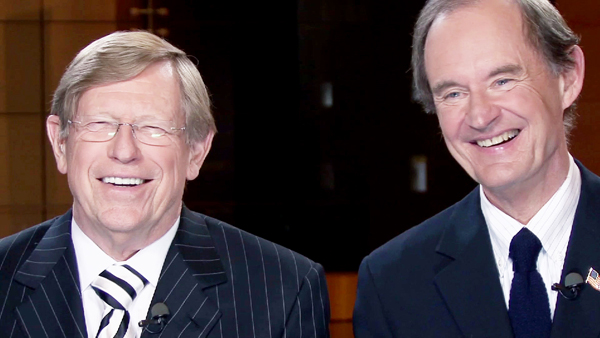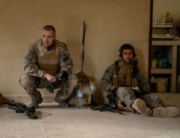In comparison to some of the acute, trenchant social issues currently informing U.S. political discourse—racial injustice, police brutality, biased judicial systems, third-wave feminism—the dialogue concerning same-sex marriage may now seem, to some, to be a bit blasé. By the end of 2014, more than half of U.S. states will have legalized gay marriage, and based on polling data, it appears that the majority of the American population has come to accept the inevitable: that in a few years’ time, same-sex marriage will be lawful for all American citizens.
And yet, how quickly we forget that only a few years ago this seemingly fated conclusion was far from a sure thing. The Case Against 8 reminds us of the hard-fought battles that gay rights organizations had to wage—in the courts and public opinion—in order to navigate our nation to its current political standpoint.
Directed by Ben Cotner and Ryan White, the documentary presents the storied journey of activists working to overturn Proposition 8. Voted on by the people of California, the state amendment banning same-sex marriage was passed on the same night as Obama’s historic 2008 election, leaving Californians with a change that many were not so eager to believe in. In 2009, the American Foundation for Equal Rights (AFER) filed suit on behalf of two same-sex couples, challenging the constitutionality of Prop 8.
Focusing on the lead-up to the Perry v. Schwarzenegger case, the filmmakers introduce key players: the plaintiffs (long-term couples Kris Perry and Sandy Stier, and Paul Katami and Jeff Zarrillo) and the attorneys defending them. In a spit take decision heavily contested by many LGBT groups, AFER hired David Boies and Theodore B. Olson to represent the couples. Boies, former attorney for the Gore Campaign, and Olson, a prominent conservative lawyer and former U.S. Solicitor General, together rose to fame when they opposed each other in the 2000 Bush v. Gore case. Olson’s role in securing Bush’s presidency left him with a hard-edged right-wing reputation, yet the traditions of marriage were what led him to want to fight for same-sex couples. “Marriage is a conservative value,” he offers. “We should want people to come together in marriage.”
The filmmakers hit many of the expected beats when establishing the stakes of the court case, but the modest backgrounds of the plaintiffs generate an affecting everyman sensibility to the proceedings. Teary-eyed parents convey unconditional love for their gay sons while detached teens would rather play video games than harp on about the inconsequential fact that they have two mothers. These unremarkable—and utterly human—responses to the same-sex marriage debate help solidify that, really, we’re all the same, and we’re all in this together.
California’s Supreme Court disallowed cameras in the court room for the 2010 trial, so the directors get crafty with depicting the recollection of the hearings. Instead of producing chintzy reenactments, the cross-examinations are recalled and reflected upon by the plaintiffs, the lawyers, and some of the previously anti-gay witnesses. The inclusion of an interview with David Blankenhorn, president of the Institute of American Values, adds incredulity and humor (Who does this guy think he is?) while accentuating the baselessness of anti-gay arguments. Even he comes around in the end. Verbatim readings of trial transcripts also permits the viewers and those directly involved with the lawsuit to reaffirm the magnitude of this landmark achievement.
Filmed over the course of four years, the film, and its technology, evolve along with the tides of public opinion. Some of the earlier clips from 2010 render the film a bit amateurish due to its lack of HD footage. But as the courts of appeals pass along the lawsuit, so do the cinematographers exchange their equipment. It’s almost as if the filmmakers realized some time in 2012 the weight of the footage they were capturing and fittingly concluded, “Eh, we should probably invest in better cameras.”
Nevertheless, Cotner and White craft a riveting, thoughtful, and ultimately humane document that encapsulates an American moment—and a movement—not seen in decades. The fact that only a couple of years later we’ve moved our focus to other equally weighty topics simply means that, thanks to the commitment and energy of the few speaking on behalf of the masses, we’ve made significant strides forward. No H8, indeed.

















Leave A Comment